Physical Address
304 North Cardinal St.
Dorchester Center, MA 02124
Percutaneous computed tomography–guided biopsy should be performed in patients when diagnosis may influence the decision to proceed with surgery or the extent of surgery.
It is critical that wide negative margins are obtained in tumor resection.
Adjuvant therapy with proton beam or intensity-modulated radiation therapy is used for contaminated margins or incomplete resections.
Optimal wound closure is critical, and the surgical team should consider the utilization of plastic surgery flaps such as the vertical rectus abdominis myocutaneous flap.
Tumors involving the sacral region of the spine are rare, and present the surgeon with significant challenges because of the anatomic complexity of the region, the biomechanical demands of the sacrum and pelvis, and the extension of disease that is characteristic of tumors involving the sacrum. Understanding the classification of tumors of the sacrum, based upon primary and metastatic tumors and their cell types, is important for planning an optimal operative and adjuvant care approach. The surgical approaches to tumors of the sacrum and the perioperative care, including avoidance and management of complications, are priorities for appropriate and optimal care. The purpose of this chapter is to review the classification of, clinical presentation of, diagnosis of, and surgical approaches for management of tumors involving the sacrum.
Optimal treatment strategies depend heavily on the extent of invasion, involvement of neighboring structures, and pathological diagnosis. Low-grade malignancies, isolated sarcomas, and benign tumors may be cured with en bloc or intralesional resection, whereas metastatic lesions often require debulking procedures for palliation. Sciubba and colleagues classified sacral tumors into four general categories: metastatic, congenital, primary osseous, and primary neurogenic.
Following the lungs and liver, the skeleton is the third most common site of metastasis, with spinal involvement occurring in 5% to 10% of all cases. , Metastatic spread of distant primary tumors represents the most common neoplasms in the spinal axis, including the sacrum. Common sources include lung, breast, prostate, renal, and thyroid tumors, which spread hematologically. Sacral metastases are typically osteolytic, except cases of breast and prostate primaries, which are often osteoblastic. Hematological malignancies, such as multiple myeloma and lymphoma, can occur in the sacrum via metastasis or as primary sites. Furthermore, the sacrum may be involved from locally invasive tumors, such as rectal adenocarcinomas.
The diagnosis of metastasis often occurs earlier than it does for other tumors of the sacrum because of their rapid growth, causing low back pain and radicular symptoms ( Fig. 158.1 ). However, sacral involvement often signifies advanced metastatic disease, with treatment options limited to chemotherapy or radiation, which is also impacted by the radiosensitivity of the primary tumor. Tumors of the lymphoid tissue and prostate cancer are known radiosensitive sources of sacral metastases, whereas tumors such as melanoma, gastrointestinal cancers, and renal cell carcinoma are radioresistant. , In such cases, surgery is limited to palliative decompression of neural or pelvic structures. In select cases, an extended abdominoperineal resection or pelvic exenteration involving a sacrectomy for locally invasive pelvic tumors may be indicated.
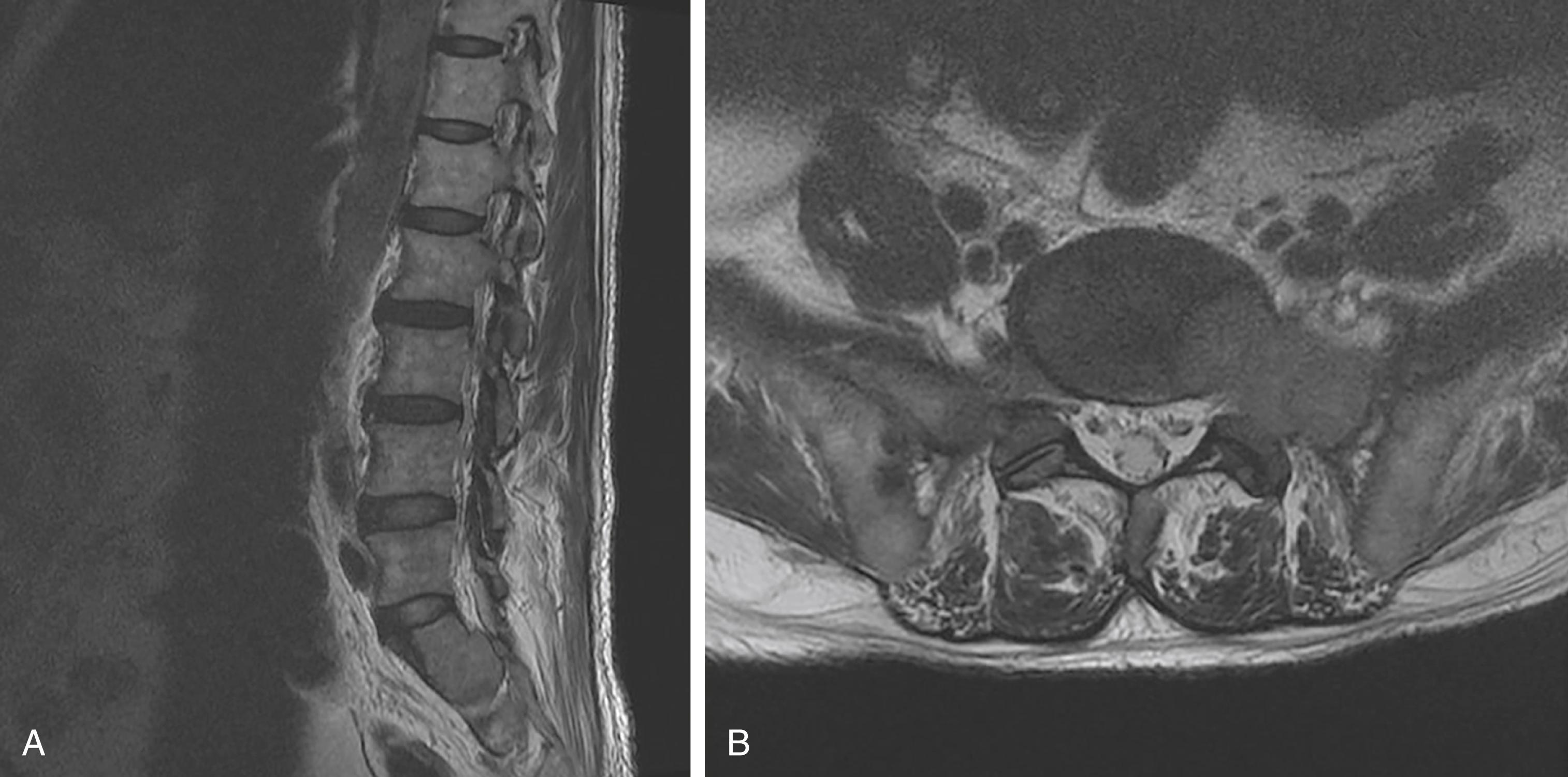
Congenital lesions of the sacrum include dermoid cysts, sacral meningoceles, perineural (Tarlov) cysts, teratomas, hamartomas, and chordomas. Perineural cysts of the spinal nerves, defined by I.M. Tarlov in the early 20th century, are cerebrospinal fluid (CSF)–filled cavities that develop around dorsal spinal nerve roots. , These lesions are often asymptomatic and found incidentally on imaging, but may lead to symptomatic disease with pain and/or neurological deficits ( Fig. 158.2 ). , For cases with symptomatic disease requiring surgical intervention, various techniques have been described in the literature, including cyst fenestration or cyst excision with or without closure, using fibrin glue. In a recent literature review, cyst excision followed by defect closure with fibrin glue was shown to have a greater rate of improvement compared with other combinations, and sacral laminectomy was mostly preferred in open procedures for cyst excision.
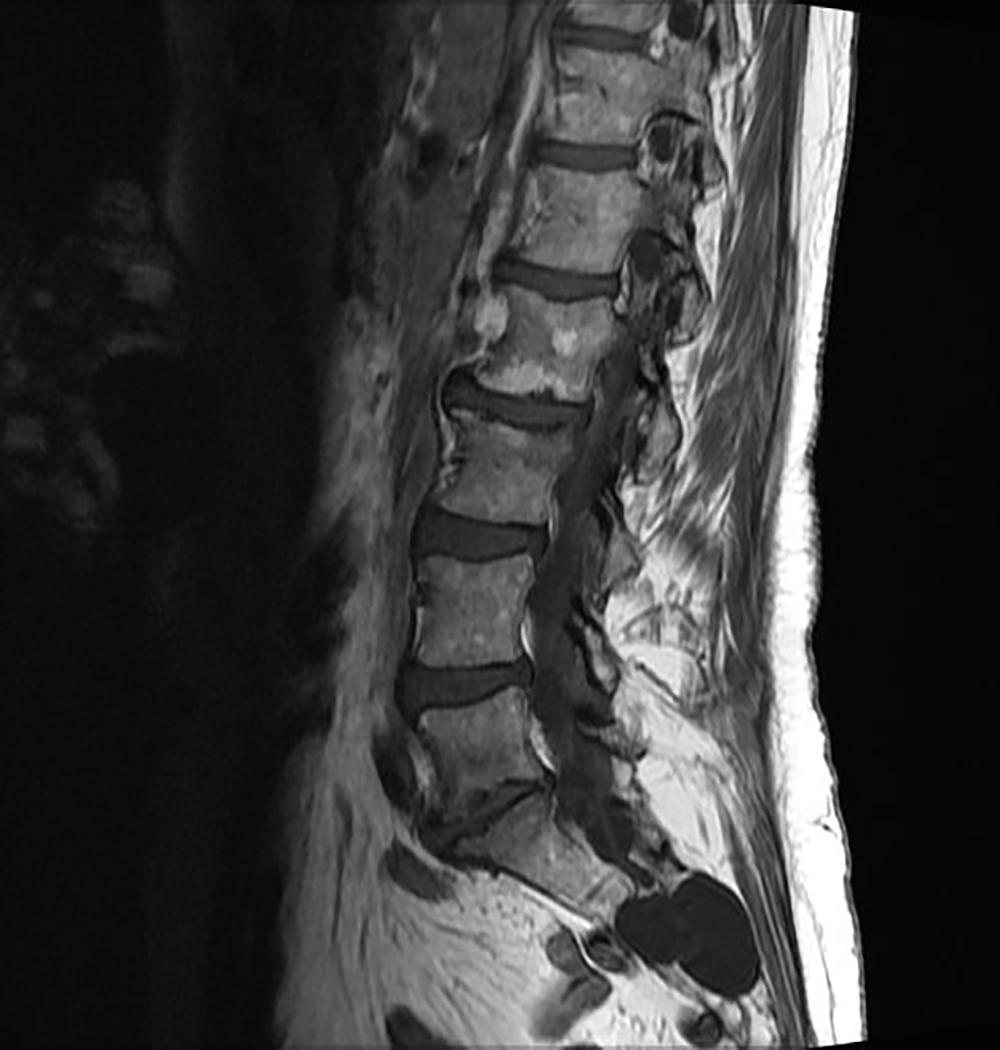
Sacral teratomas are among the most common forms of neonatal teratoma, with an incidence of 1/40000 live births. They present with a large sacral mass and may be associated with other congenital abnormalities ( Fig. 158.3 ). Complete removal of the tumor results in excellent prognosis. Hamartomas can present similarly to teratomas, with a relatively lower incidence. The management includes surgical resection, avoiding tethered cord.
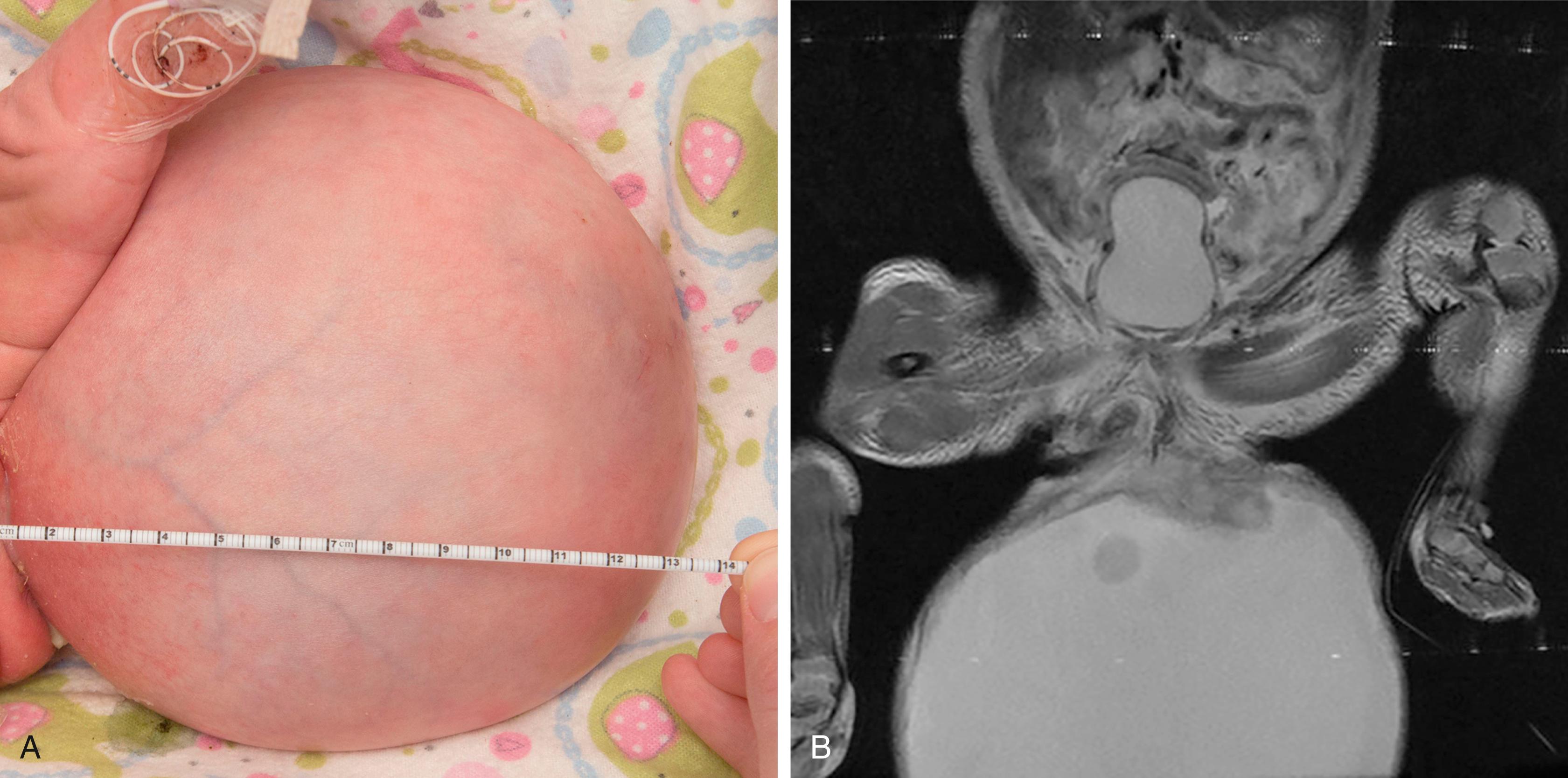
Chordomas are the most common primary bone tumor of the sacrum, arising from notochordal rests. Chordomas occur mostly in individuals between the ages of 40 to 70 and have a 2:1 male-to-female predominance, with approximately 50% to 60% occurring in the sacrum. They are slow-growing, locally invasive lesions that often present with sacral pain or symptoms secondary to sacral nerve root compression, such as sciatic pain, leg weakness, and bowel/bladder dysfunction ( Fig. 158.4 ). En bloc resection is often curative and is the major determinant of disease-free survival. The sacrectomy should extend one entire sacral segment beyond the diseased portion rostrally and caudally.
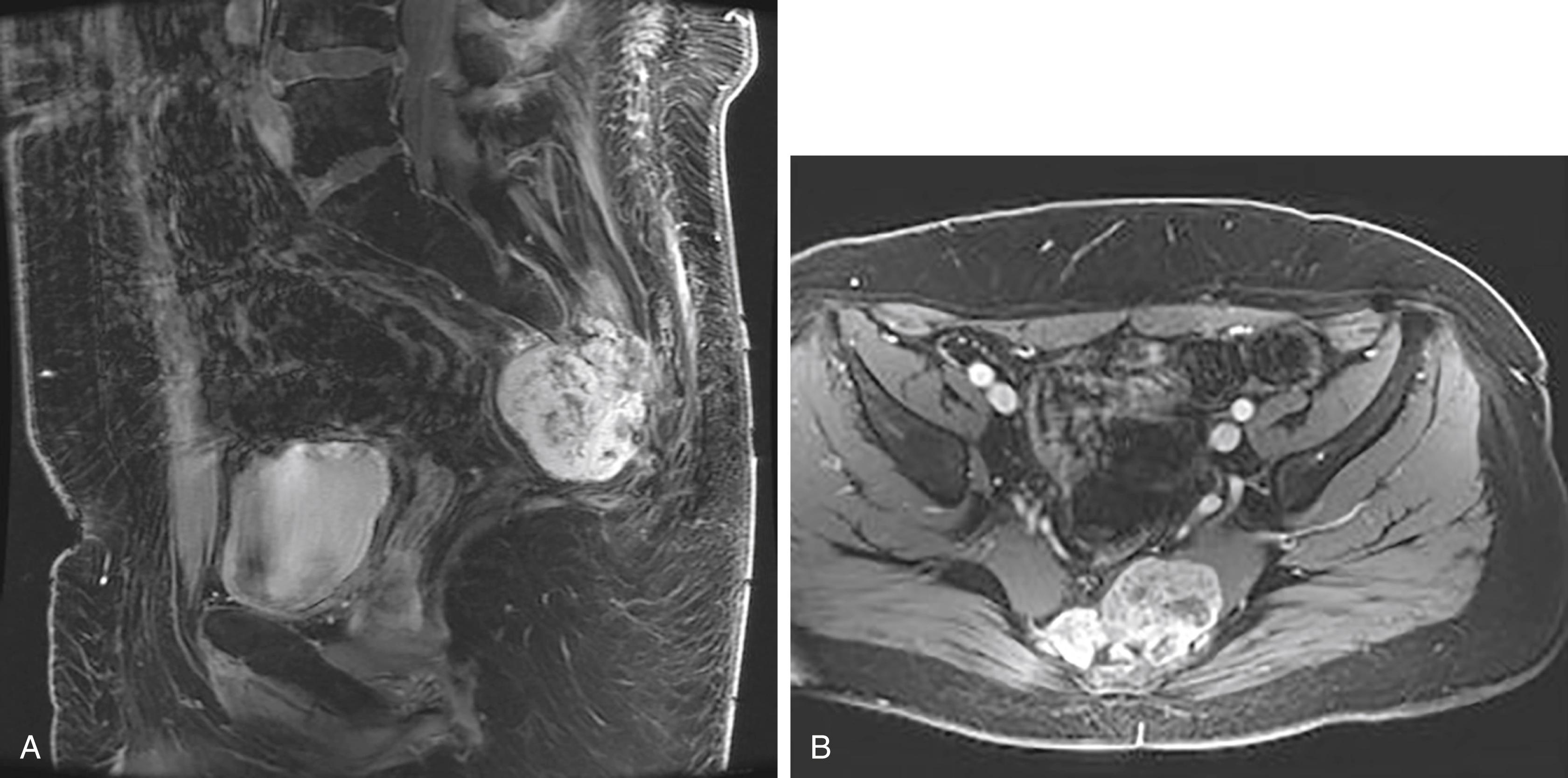
Primary osseous tumors account for less than 10% of all primary bone tumors and can be divided into low-grade, high-grade, and benign lesions. Low-grade lesions include osteoid osteomas, osteoblastomas, osteochondromas, and aneurysmal bone cysts and are often discovered incidentally. When symptomatic, osteoid osteomas can produce localizing pain that is worse at night and often relieved with salicylates. Osteoblastomas are histologically similar to osteoid osteomas but measure greater than 2 cm in diameter and typically present with a dull, poorly localized ache ( Fig. 158.5 ). Subtotal resection and intralesional curettage of osteoid osteomas and osteoblastomas are effective in treating symptoms but have a higher likelihood of recurrence compared with total resection. Radiotherapy and embolization of feeding arteries are also reported to be effective in aggressive cases.
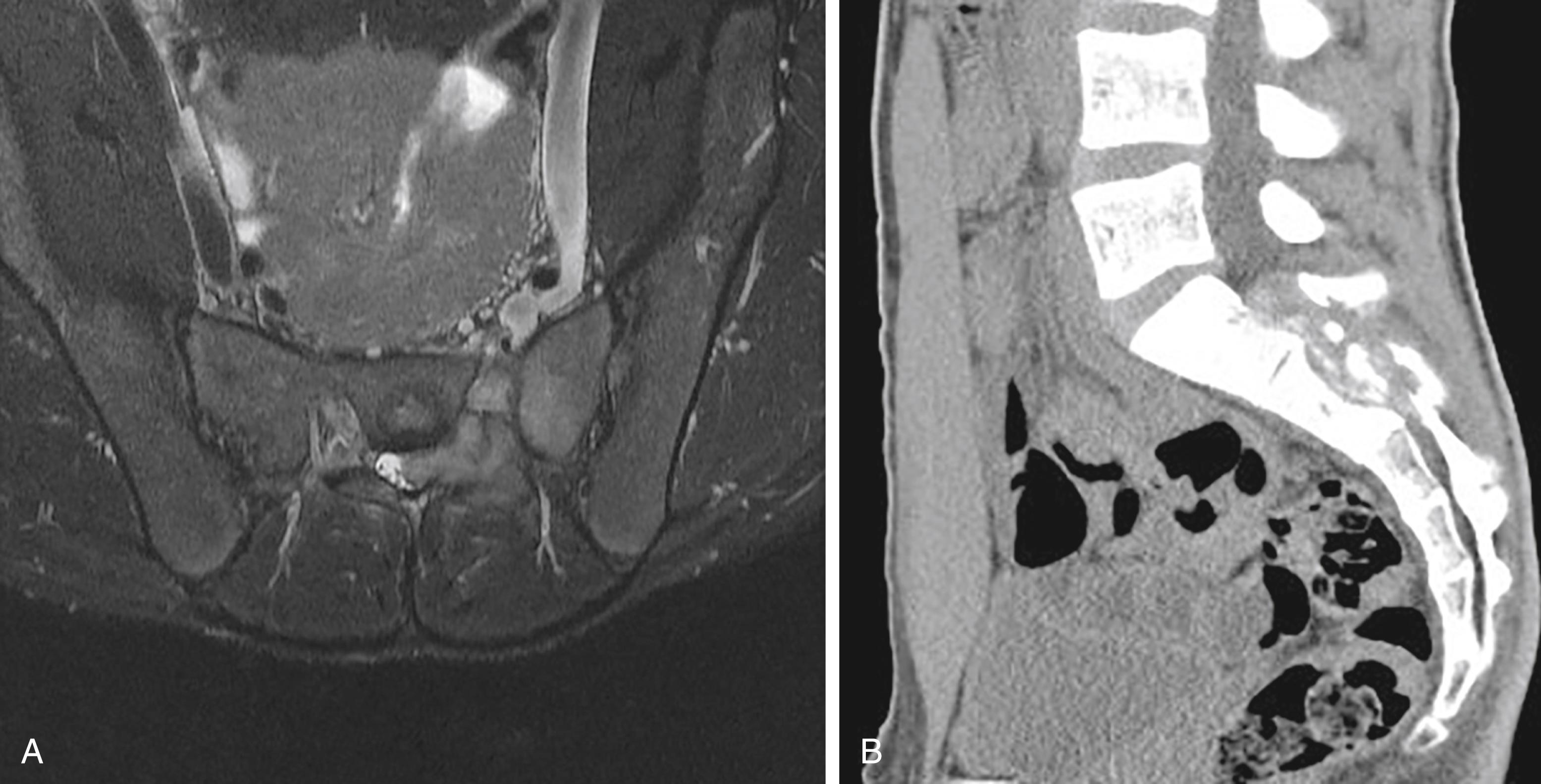
Aneurysmal bone cysts occur mostly in children and can present with back pain. Extensive lesions can cause significant sacral destruction and symptoms secondary to sacral nerve root compression ( Fig. 158.6 ). Aneurysmal bone cysts may resolve spontaneously, but in severely symptomatic cases they may be treated successfully with selective arterial embolization.
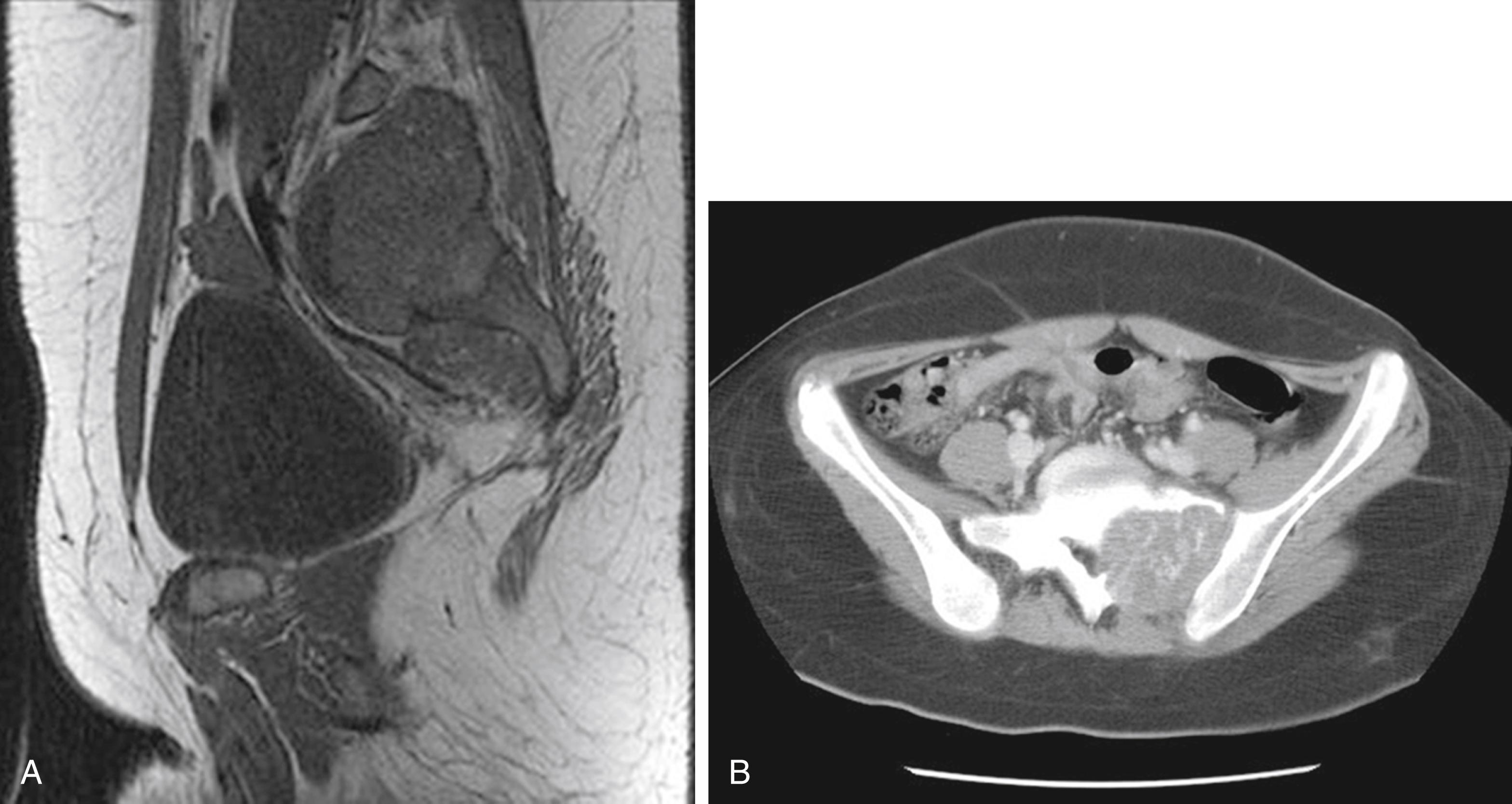
High-grade osseous tumors of the sacrum are typically sarcomas, which include chondrosarcoma, osteosarcoma, and Ewing sarcoma. Sacral chondrosarcomas have a male predominance, typically occur between 30 and 70 years of age, and can be divided into primary (arising de novo) or secondary (malignant transformation of enchondroma or osteochondroma). Osteosarcomas are high-grade lesions that most frequently involve the lumbosacral spine. Primary osteosarcomas arise de novo and affect men in the fourth decade of life, whereas secondary lesions occur in individuals with a history of radiation and from malignant transformation of giant cell tumors or Paget disease. Wide local excision is advised in amenable cases, as these lesions are typically resistant to chemotherapy and radiation. Despite adequate excision, the mean survival for patients with chondrosarcoma and osteosarcoma is 6 years and 10 months, respectively. ,
Primary Ewing sarcoma is a high-grade tumor histologically composed of small, round cells that affects the spine in 3% to 10% of cases, with a predilection for the sacral ala. , These lesions are typically sensitive to chemotherapy and radiation. The addition of surgical resection has been suggested to improve survival. It is also suggested that Ewing sarcoma of sacrum has a better response (increased 5-year disease-free survival rate) compared with Ewing sarcoma of innominate bones with radiotherapy alone or in a combination with surgery.
Giant cell tumors are histologically benign, slow-growing tumors of young adults, often affecting the sacrum. These lesions often attain a large size because of their indolent growth and present with pain and symptoms of neurological compression ( Fig. 158.7 ). Response to radiation is variable and has been reported to lead to sarcomatous degeneration. Total resection is preferred, as giant cell tumors have a high rate of recurrence and may require total sacrectomy when the tumor crosses the midline. These tumors also have a tendency to involve the upper sacral segments and the sacroiliac joints. Successful treatment has also been reported with intralesional curettage with bone cement implantation and cryotherapy.
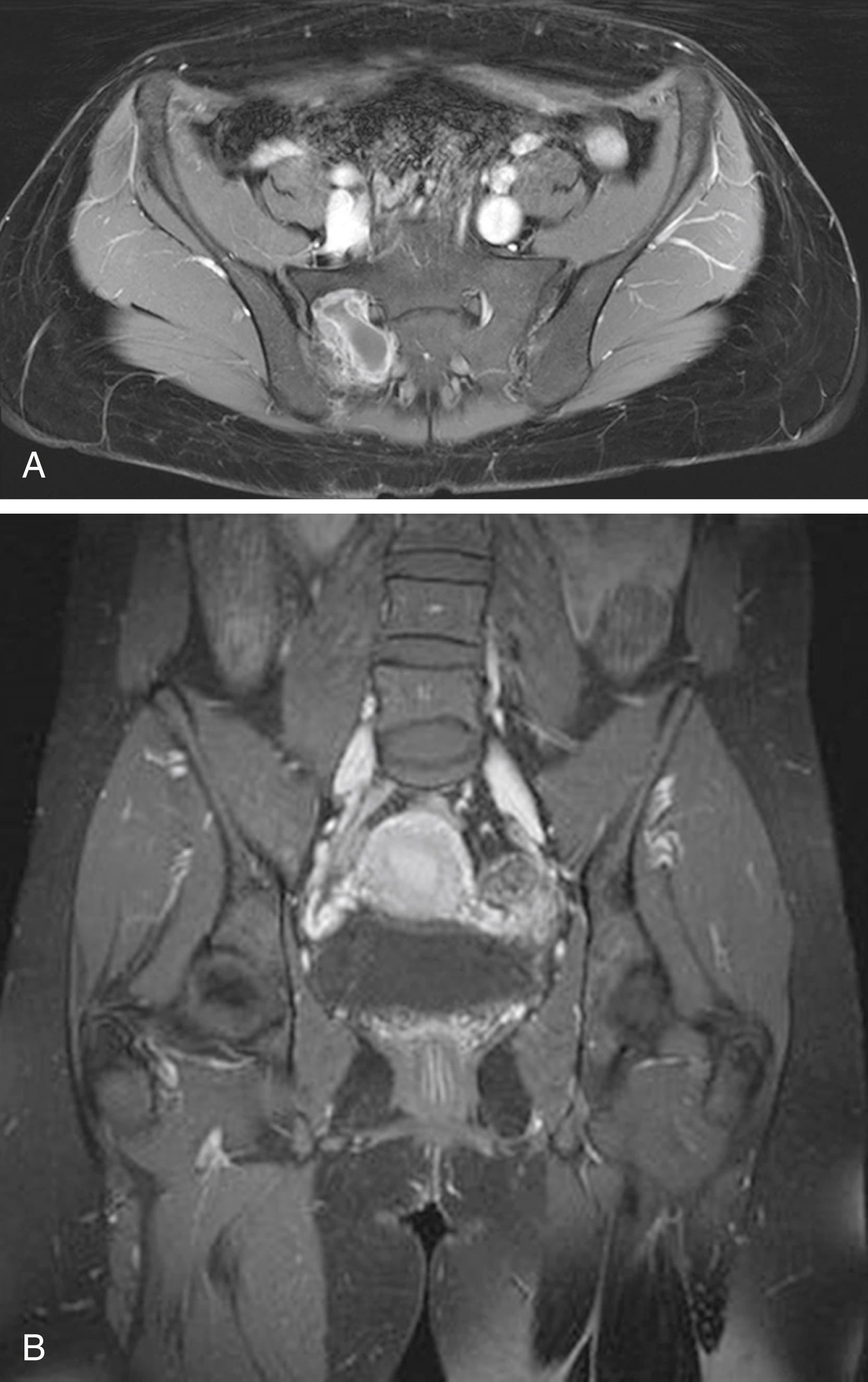
Primary neurogenic tumors, which include schwannomas ( Fig. 158.8 ), neurofibromas ( Fig. 158.9 ), ependymomas, and ganglioneuromas, rarely involve the sacrum. Similar to the rest of the spine, sacral schwannomas and neurofibromas are slow-growing, benign nerve sheath tumors that may have intra- and extradural components. They often grow through a neural foramen, leading to a dumbbell shape, or they can fill the spinal canal, leading to sacral nerve root dysfunction. Most tumors can be resected from a posterior, intradural approach. However, when there is a significant presacral component, an anterior approach may be warranted.
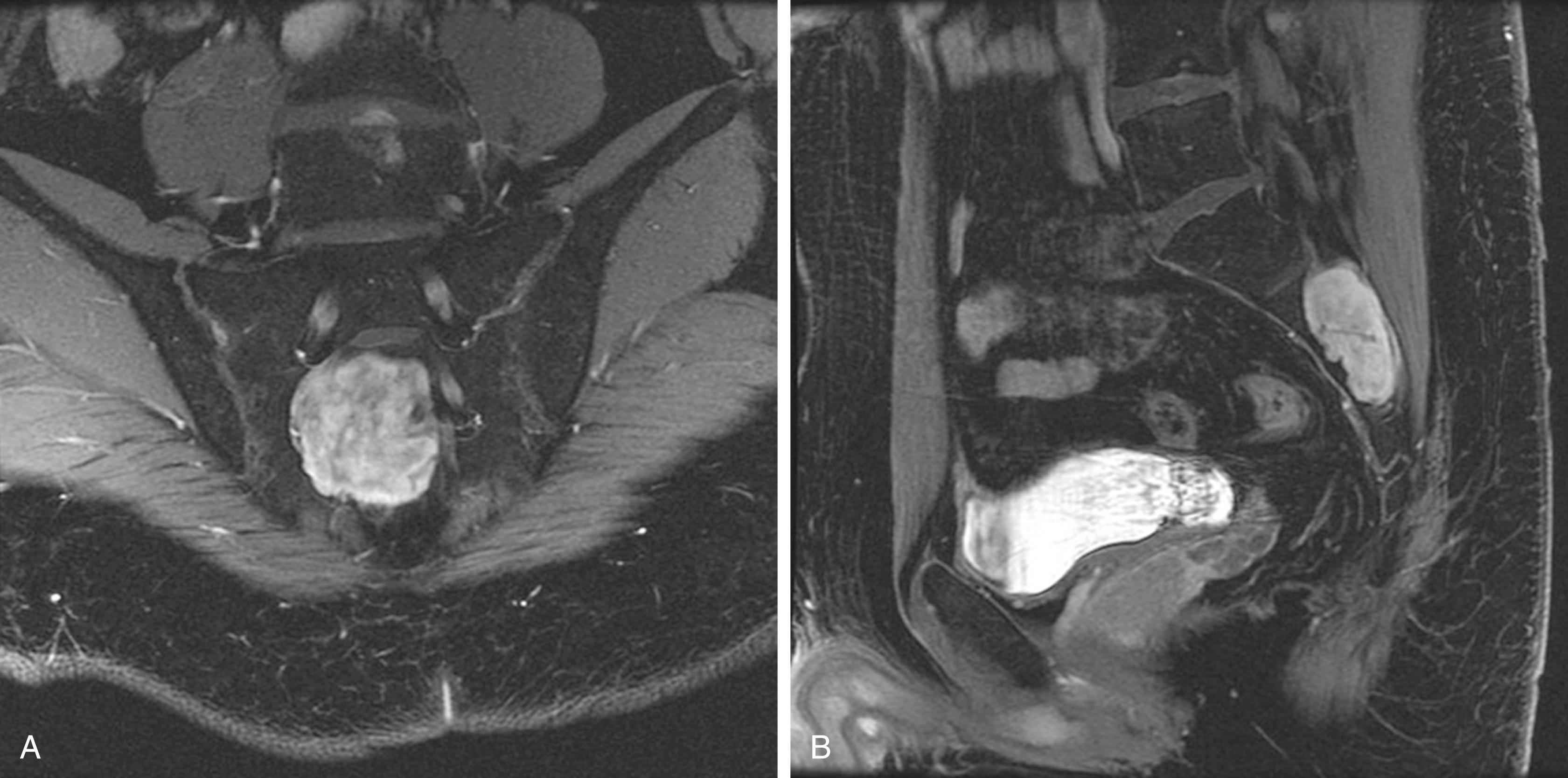
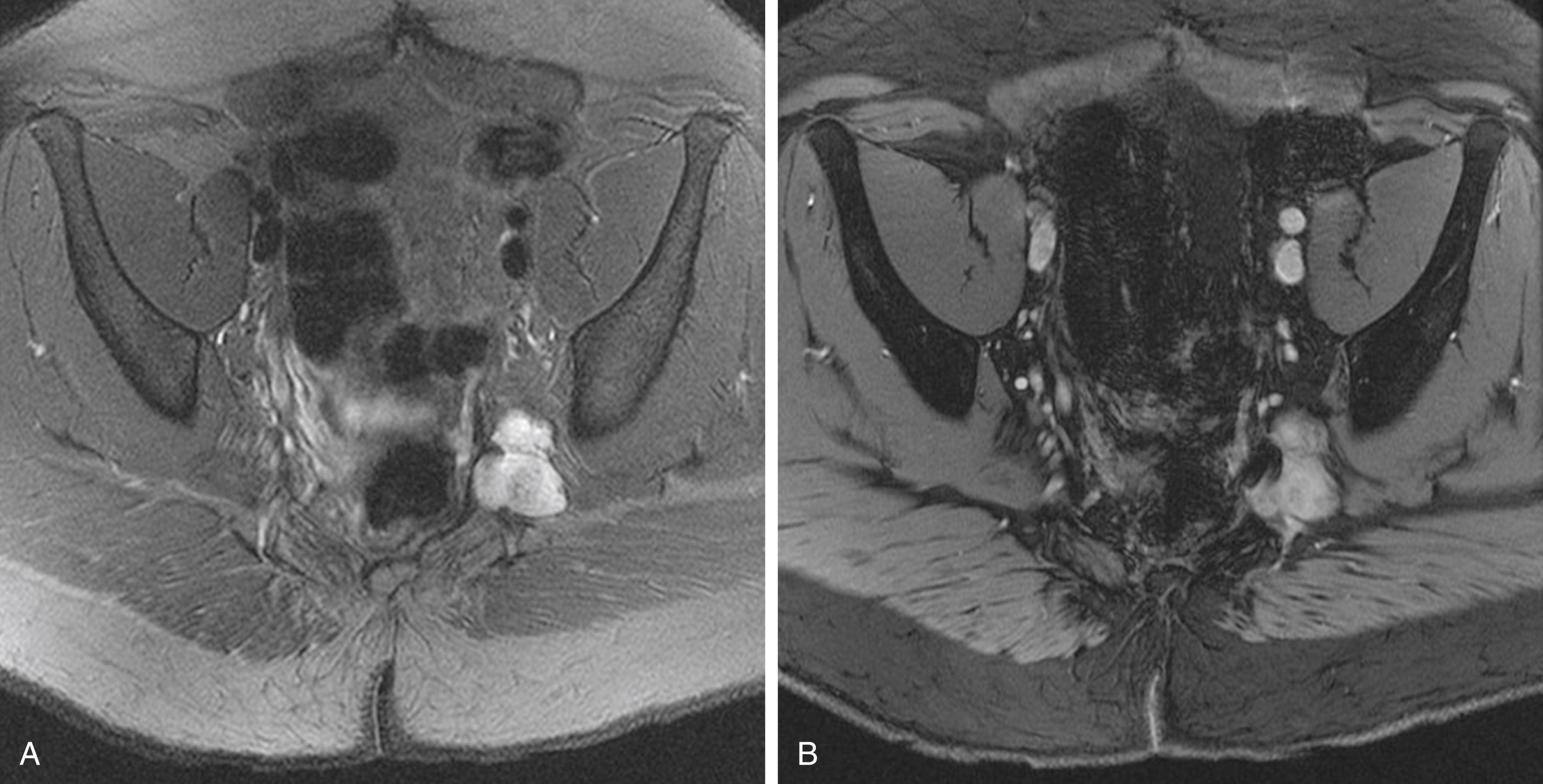
Sacral ependymomas are most commonly myxopapillary histological variants. These can be intra- or extradural and can cause significant sacral erosion before diagnosis ( Fig. 158.10 ). En bloc resection is curative and can avoid CSF dissemination. Ganglioneuromas arise from sympathetic nerves and can rarely grow ventral to the sacrum along the sympathetic chain. Extension through the neural foramen can lead to sacral nerve root compression ( Fig. 158.11 ). Complete excision may require a combined anterior-posterior approach.
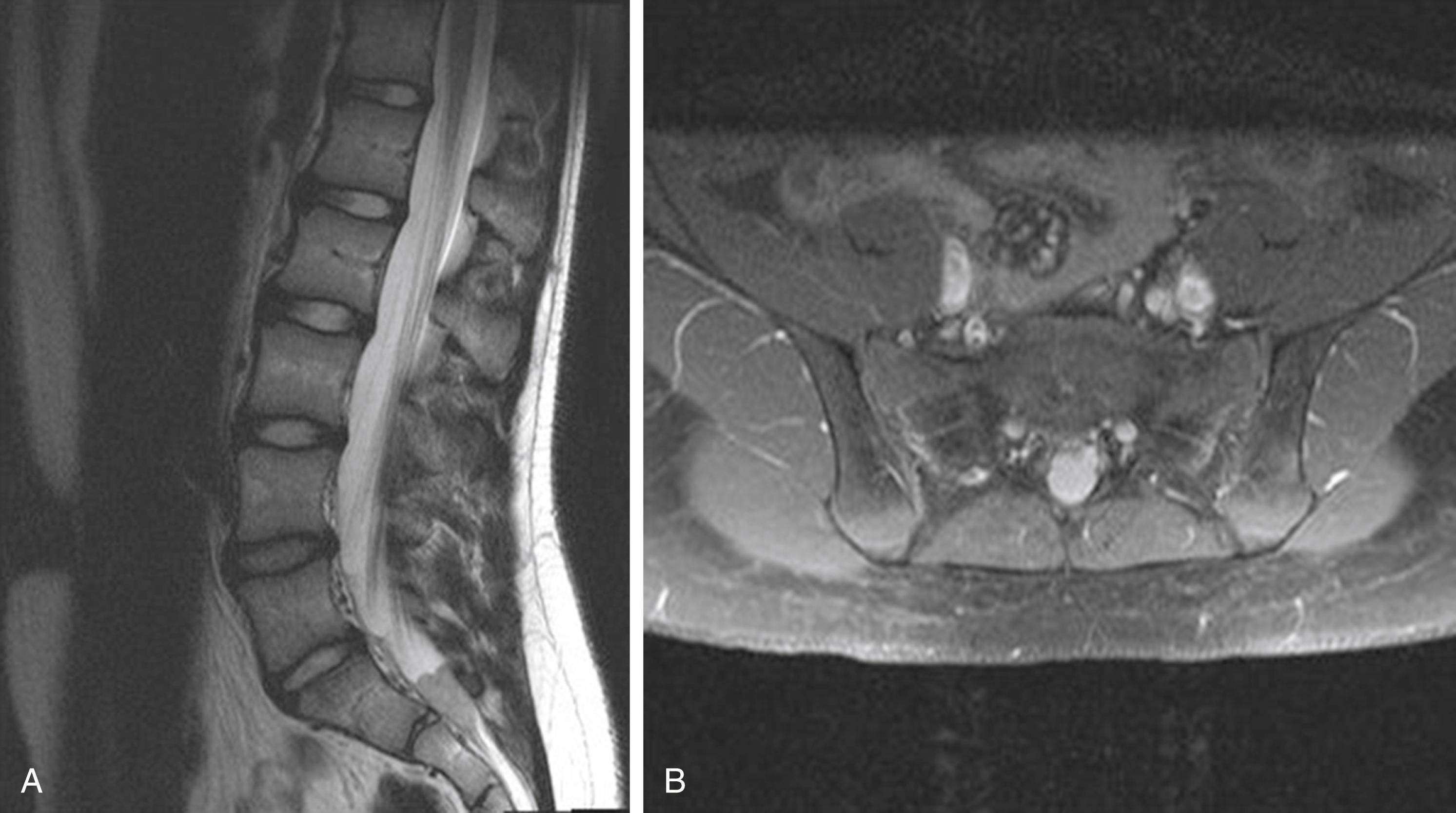
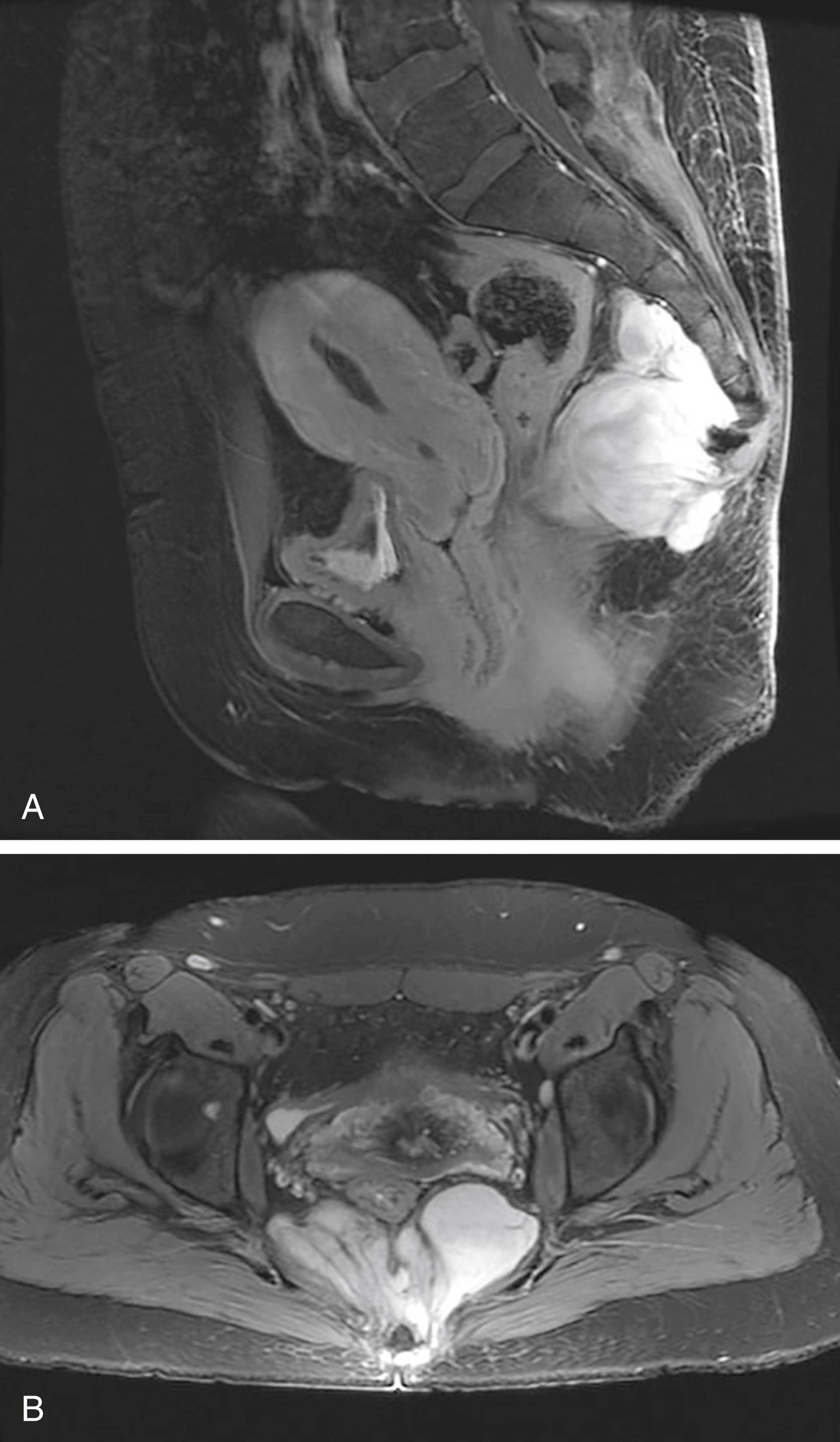
Become a Clinical Tree membership for Full access and enjoy Unlimited articles
If you are a member. Log in here